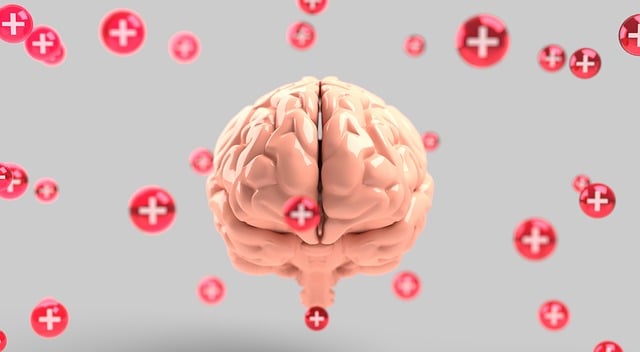Preventing Depression in Teens: Therapy, Resilience, and Support
Depression in adolescent teens often goes unrecognized, with early signs including persistent sadnes…….
In the evolving landscape of mental health care, “Therapy for Adolescent Teens Gender-Affirming Care” stands as a revolutionary approach tailored to meet the unique needs of young individuals navigating their gender identity. This article delves into the intricate world of this therapeutic modality, exploring its definition, global impact, economic implications, technological innovations, regulatory framework, challenges, and promising future prospects. By examining these aspects, we aim to equip readers with a holistic understanding of how this care model is shaping the lives of adolescent teens and influencing cultural and societal perceptions.
Definition:
Therapy for Adolescent Teens Gender-Affirming Care refers to a specialized form of psychological and social support designed to assist teenagers in exploring, understanding, and embracing their gender identity. This therapeutic approach focuses on validating and supporting individuals who may identify as non-binary, transgender, genderqueer, or any other gender expression that deviates from traditional gender norms. The core objective is to help teens develop a positive sense of self, enhance their mental well-being, and foster an inclusive environment that aligns with their authentic selves.
Core Components:
Acceptance and Validation: Therapists create a non-judgmental space where teens can openly discuss their gender experiences without fear of rejection or ridicule. This acceptance serves as a foundation for building self-esteem and confidence.
Exploration of Gender Identity: Through various therapeutic techniques, including cognitive-behavioral therapy (CBT) and existential psychotherapy, teens are guided to explore different aspects of their gender identity. This exploration helps them differentiate between their true selves and societal expectations.
Family Involvement: Many gender-affirming care programs involve family members in the therapeutic process to promote understanding, reduce intergenerational tension, and foster a supportive home environment.
Medical Interventions (if needed): In cases where teens and their families opt for medical transitions, therapists coordinate with healthcare professionals to ensure a comprehensive approach that addresses psychological, social, and physical aspects of gender affirmation.
Historical Context:
The evolution of therapy for adolescent teens gender-affirming care can be traced back to the late 20th century when the LGBTQ+ community began advocating for mental health services that respected and supported gender diversity. Early approaches often lacked cultural sensitivity and were influenced by pathologizing views of transgender identities. However, significant shifts occurred in the 1990s and early 2000s with the emergence of more inclusive therapeutic models and research highlighting the detrimental effects of gender-nonconforming behavior on young people’s mental health. Today, this form of care is gaining recognition as a vital component of comprehensive adolescent healthcare.
International Influence:
“Therapy for Adolescent Teens Gender-Affirming Care” has transcended geographical boundaries, finding resonance across diverse cultures and societies. Countries like Canada, the United Kingdom, Australia, and several European nations have integrated this care model into their healthcare systems, leading to improved access and outcomes for young gender-diverse individuals.
Regional Variations:
Market Dynamics:
The market for adolescent mental health services, including gender-affirming care, is experiencing significant growth due to rising awareness, changing societal attitudes, and increased government support. According to a 2022 report by Grand View Research, the global therapeutic interventions market size was valued at USD 157.9 billion in 2021 and is projected to expand at a CAGR of 7.8% from 2022 to 2030. Within this sector, gender-affirming therapy services are expected to witness substantial demand due to their positive impact on teen well-being and long-term mental health outcomes.
Investment Patterns:
Governments, healthcare organizations, and private investors are increasingly allocating resources to fund research, train professionals, and develop specialized treatment centers for gender-affirming care. This investment is driven by the recognition that early intervention and support can lead to improved health outcomes and reduced societal costs associated with untreated mental health issues.
Economic Impact:
Telehealth and Online Resources:
The digital revolution has significantly impacted therapy for adolescent teens gender-affirming care through the advent of telehealth services and online support platforms. These innovations enable remote counseling sessions, online support groups, and access to educational resources, making care more accessible, particularly in underserved regions. Apps like “Trans Lifeline” and “Gender Spectrum” offer digital tools for self-support and community connection.
Artificial Intelligence (AI) Applications:
AI has the potential to revolutionize this field by personalizing treatment plans, providing automated cognitive-behavioral therapy sessions, and predicting outcomes based on data analysis. For example, AI chatbots can offer initial assessments and guide teens towards appropriate resources or professional help.
Virtual Reality (VR) Therapy:
VR technology is being explored for exposure therapy, helping teens confront and overcome gender-related anxiety in a safe, controlled environment. This approach has shown promise in reducing symptoms of social anxiety and phobias related to gender expression.
Key Policies and Frameworks:
Regulatory Considerations:
Main Challenges:
Stigma and Misinformation: Gender-affirming care continues to face resistance and stigma, often fueled by misconceptions about transgender identities. This can deter teens from seeking help and create barriers for healthcare providers.
Access to Specialty Care: In many regions, there is a shortage of trained professionals specializing in gender-affirming therapy, leading to long wait times and limited access to quality care.
Parental Involvement: Balancing teen autonomy and parental involvement can be challenging. Some parents may resist or refuse to accept their child’s gender identity, creating tension and hindering therapeutic progress.
Strategies for Overcoming Challenges:
Case Study 1: Emma’s Journey (North America)
Emma, a 16-year-old non-binary teenager, struggled with severe depression and anxiety related to societal expectations of gender conformity. Through gender-affirming therapy, Emma discovered their true self as a proud non-binary individual. The therapist supported Emma in navigating family dynamics, leading to improved communication and understanding. With medical support, Emma transitioned, experiencing a significant boost in self-esteem and overall well-being. This case highlights the holistic approach of gender-affirming care, addressing psychological, social, and familial aspects for positive outcomes.
Case Study 2: Leo’s Transformation (Europe)
Leo, a young transgender boy in the UK, faced bullying at school due to his gender expression. Gender-affirming therapy helped Leo develop assertiveness skills and build resilience. The therapist also worked with Leo’s teachers and peers to create a supportive school environment. As a result, Leo’s academic performance improved, and he became an advocate for LGBTQ+ rights in his community. This case demonstrates the impact of therapeutic interventions on not only individual well-being but also fostering inclusive social environments.
Emerging Trends:
Strategic Considerations:
Therapy for Adolescent Teens Gender-Affirming Care represents a significant advancement in mental health services, offering hope and support to young individuals navigating their identity. By embracing this approach, healthcare systems acknowledge the complexity of gender development and its impact on adolescent well-being. As global awareness and acceptance grow, so does the potential to transform lives, foster inclusive societies, and promote positive mental health outcomes for gender-diverse teens worldwide.
Q: What is the role of parents in gender-affirming therapy?
A: Parents play a crucial role by providing emotional support, fostering open communication, and collaborating with therapists to create a safe environment for their child’s exploration of gender identity. While some parents may initially resist or struggle to accept their child’s gender expression, therapy can help them understand and embrace their child’s authentic self.
Q: Is gender-affirming care appropriate for younger teens?
A: Yes, early intervention is beneficial for many gender-diverse youth. Therapists use age-appropriate techniques to support teens as young as 12 or 13 in exploring their gender identity and navigating related challenges. Individualized care ensures that each teenager receives guidance suitable for their developmental stage.
Q: How do I know if my teen needs gender-affirming care?
A: If your teen exhibits signs of distress, such as persistent depression, anxiety, or self-harm related to gender identity issues, it may be a good time to seek professional help. They might express discomfort with their assigned gender at birth or display behaviors that challenge gender norms. A qualified therapist can conduct an assessment to determine the best course of action.
Q: Are there any risks associated with gender-affirming therapy?
A: Like any therapeutic approach, gender-affirming care carries minimal risks when delivered by trained professionals. Some teens might experience temporary discomfort or anxiety during therapy sessions, but these are generally manageable. The primary risk lies in not receiving appropriate support, which can lead to prolonged mental health issues and potential self-harm.
Q: How do I find qualified therapists for gender-affirming care?
A: Many healthcare providers now offer specialized services, and online directories can help you locate certified therapists in your area. Professional associations and LGBTQ+ community centers often have resources for finding qualified professionals. It’s essential to ensure that the therapist has experience working with gender-diverse youth and maintains a confidential environment.

Depression in adolescent teens often goes unrecognized, with early signs including persistent sadnes…….

Adolescent mental health challenges, fueled by academic pressures, peer dynamics, and identity forma…….